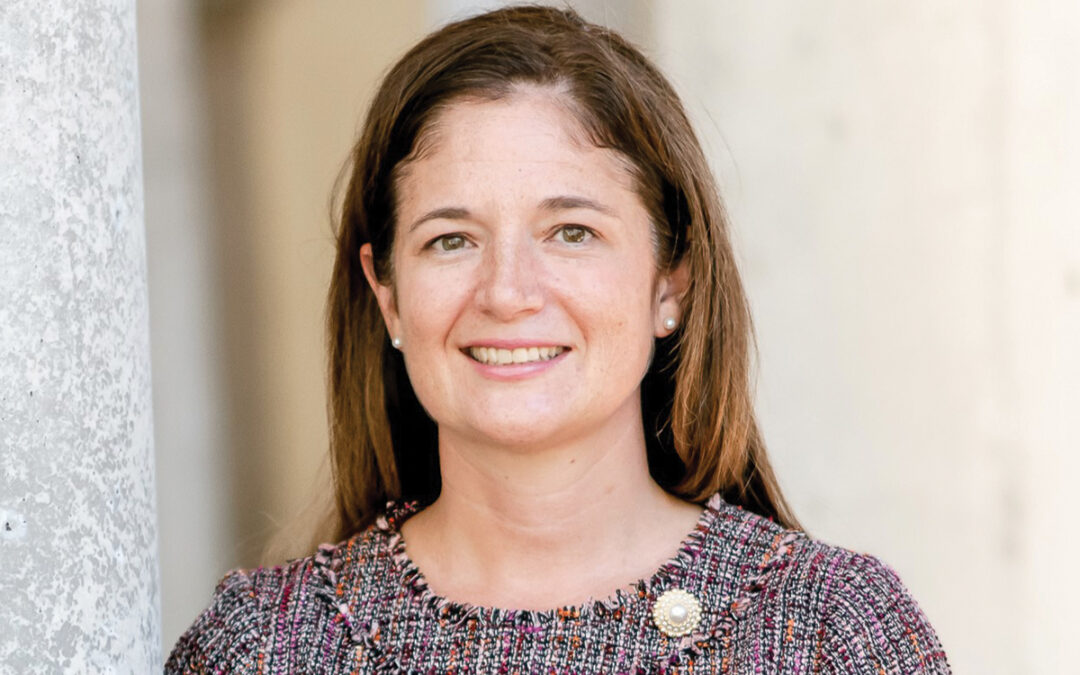One in eight women will be diagnosed with breast cancer in their lifetime. Even if you don’t have a family history of breast cancer, it’s not something you can ignore.
“I hear it all the time, ‘I don’t have any family history.’ But one in eight. That’s 12 percent of women. And that means a high percentage of women will be the first in their family to be diagnosed,” explains Dr. Justin Boatsman, a radiologist with South Texas Radiology Imaging Center.
Breast cancer is the most common cancer in women and sadly, the most common cause of death from cancer among Hispanic women. It’s also the second most common cause of death from cancer in white, black, Asian/Pacific Islander, and American Indian/Alaska Native women.
But new technology is helping with early detection, giving women the opportunity to discover—and treat—breast cancer earlier.
Digital breast tomosynthesis, also called DBT or tomo, is the medical term for what has become known as 3-D mammography. While 3-D brings to mind high-tech computer imagery and makes it sound like something is going to jump out of a screen to scare you, that’s not the case with 3-D mammography, a revolutionary new screening and diagnostic breast imaging tool to improve the early detection of breast cancer.
Tomo or 3-D mammography creates a three-dimensional picture of the breast using X-rays. Several low-dose images from different angles around the breast are used to create the 3-D picture, versus a conventional mammogram that creates a single two-dimensional image from two X-ray images of each breast.
An easy way to understand the difference is to think of a loaf of bread, explains Dr. Claire McKay, DO, FAOCR, Board Certified Diagnostic Radiologist with Baptist Breast Center / Baptist M&S Imaging. “Three-D imagery is like taking pictures of ‘slices’. Images are taken at two-millimeter intervals, ‘slicing’ into the breast to give us a better view. If you’re looking at a loaf of bread, you can’t see what’s inside. But when you slice into it, you can see each slice. 3-D mammograms allow us to see better inside.”
Dr. Amy Lang, MD, FACP, medical oncologist with START Center for Cancer Care, explains how the imaging works: “When those multiple images are stacked together, we get a much clearer picture. It’s almost like giving doctors 3-D glasses to give you a better view, especially for women with dense breast tissue.”
Breast density is a measure used to describe the proportion of the different tissues that make up a woman’s breasts. It’s not a measure of how breasts feel, but rather how breasts look on a mammogram. Mammograms of dense breasts are harder to read, which means that it can be harder to detect breast cancer in women with dense breast tissue.
“The fibrous tissues of the breast have the same density of cancer, so it can be missed. But 3-D mammography increases the chance of finding it,” says Dr. Boatsman.
If you don’t know the density of your breast tissue, you should. Texas law requires that mammography providers notify all women with dense breast tissue that the accuracy of their mammograms is less than that of women with lower breast density and that they may benefit from supplemental screening. “When we send the letter about patients’ results, we send a separate letter detailing their breast density,” says Dr. McKay.
However, Dr. Lang noted that if patients don’t receive the information, they should absolutely ask their physician. “Ask your doctor or radiologist. Be proactive so you know what’s best for you.”
Research suggests that women with dense breast tissue are more likely to get breast cancer than women with low breast density. Breast density is classified into four categories and is rated on a scale of A to D. Category A is almost entirely fatty, indicating that the breasts are almost entirely composed of fat. Category D is extremely dense breast tissue. “Having fatty breast tissue has nothing to do with your weight. Fatty tissue is just easier to see through than dense breasts, which have more connective tissue and fibrous tissue. You can be any body type and have fatty breast tissue, or have dense breast tissue,” explains Dr. Lang.
Category C and Category D are recommended to receive supplemental screening such as 3-D mammography, ultrasound or an MRI. Several studies have found that 3-D mammograms find more cancers than traditional 2-D mammograms and can also reduce the number of false positives.
The great news for Texas women: Beginning January 2018, insurance providers in Texas will be required to cover 3-D mammography with zero copay for women over the age of 35, thanks to a bill signed by Gov. Greg Abbott this summer.
“3-D mammograms are on the verge of becoming the new standard. They offer improved cancer detection and accuracy. They also reduce the need to be called back for additional imaging and help eliminate false positives,” says Dr. Boatsman.
A false positive – when a mammogram shows an abnormal area that looks like a cancer but turns out to be normal – can be scary, ultimately, the news is good: no breast cancer. The suspicious area usually requires follow-up, including additional screening and a possible biopsy. There are psychological, physical, and economic costs that come with a false positive.
“Five-year survival rates now approach 100 percent for Stage 0 (very early) and Stage 1 (early) breast cancers. The five-year survival rate is approximately 70 percent for Stage 3 breast cancers and approximately 22 percent for metastatic Stage 4 breast cancers,” explains Dr. McKay. “You have to be proactive. Understand your body, know when something is different so you can address that. That includes annual mammograms so you know about your breasts. We have to take care of ourselves, including ruling out false positives.”
For all of the up sides to 3-D mammography, there are myths floating around. Drs. Boatsman, Lang and McKay all said one of the biggest myths is about radiation exposure. “A mammogram is a low dose exam. It has less radiation than a chest or spinal X-ray,” notes Dr. Boatsman. “If you live in San Antonio for seven weeks, you get the same amount of normal, background radiation exposure.”
Dr. McKay points out people are exposed to radiation when they fly, for example, to London, or are exposed to background radiation like radon in Denver. “We all use microwaves, another source of daily radiation. Mammograms are important; their benefits far outweigh their risks.”
The three doctors also agreed on guidelines that all women should follow: begin annual mammograms at age 40, unless you have an immediate family history of breast cancer, then begin 10 years prior to the age that family member was diagnosed. And no matter what, do them annually so you know if anything changes and can address it. “Earlier detection means cancer is more curable. As scary as it is to have something found, it’s an easier cure: less invasive, less extensive treatment. What we’ve always said is true: early detection saves lives,” says Dr. Lang.
By Dawn Robinette











0 Comments